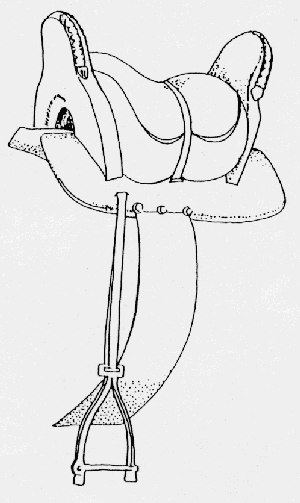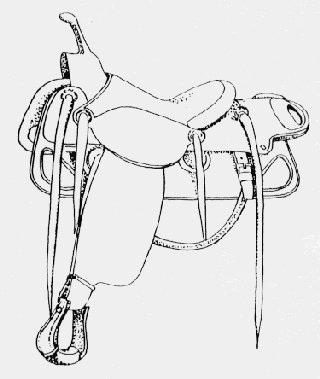The Medieval West
Today, we look at a medieval institution -- the wild and woolly West. The University of Houston's College of Engineering presents this series about the machines that make our civilization run, and the people whose ingenuity created them.
Our American West developed its own characteristic technologies for daily life. We all know the flavor: log cabins, windmills, card games, barbed wire, heavy horse-drawn wagons, whiskey, large saddles, and -- I might ominously add -- death by hanging.
Historian Lynn White points us to a startling feature of all these technologies. Log cabins were a medieval form of housing -- the earlier Romans and later Europeans used much different building technologies. The Romans and later Europeans drank beer and wine, but whiskey was the medieval drink of choice. Romans and 18th-century gamesmen used dice, but you'd find only cards in medieval or Western saloons. That sort of comparison can be made right down the line. The Romans executed people by crucifixion, and the later Europeans used beheading and shooting; but strangulation -- hanging -- was the standard medieval punishment.
This strange parallel grows more puzzling when we learn that the middle-class settlers of New England tried to recreate what they'd left behind instead of looking for the most efficient technologies. They went straightaway to the beam and plank house construction they'd left in England, when log houses would have made much better sense.
But the settlers of the West were generally the European poor -- peasants, workmen, and people who'd lived away from the sophisticated centers of Europe. They had generally been closer to the technologies of the Middle Ages. But more than that, these people found their way more quickly to the sort of rough-hewn ways that worked so well in both the medieval world and the undeveloped West. They were also people who held little nostalgia for their lives in Europe.
The technology of the 10th to the 13th centuries was wonderfully direct, practical, and inventive, and so too were the Western immigrants. Another characteristic of both medieval and Western life was that they both tended to be open to change and variety.
The old West thus provides us with an oddly accurate mirror of medieval life; but it also gives us a picture of a very effective adaptation by free and inventive people to new circumstances.
I'm John Lienhard, at the University of Houston, where we're interested in the way inventive minds work.
(Theme music)
White, L., Jr., Medieval Religion and Technology. Los Angeles: University of California Press, 1978, Chapter 7, The Legacy of the Middle Ages in the American Wild West, pp. 105-120.
This episode has been expanded and rewritten as Episode 1328.

(Drawing by Maria Zsigmond Baca. By permission of Peter Gordon)
A medieval war saddle with stirrups.
Note how firmly it holds the rider in place.

(Drawing by Maria Szigmond Baca. By permission of Peter Gordon)
A western working saddle with stirrups.
Note the kinship with the medieval saddle.